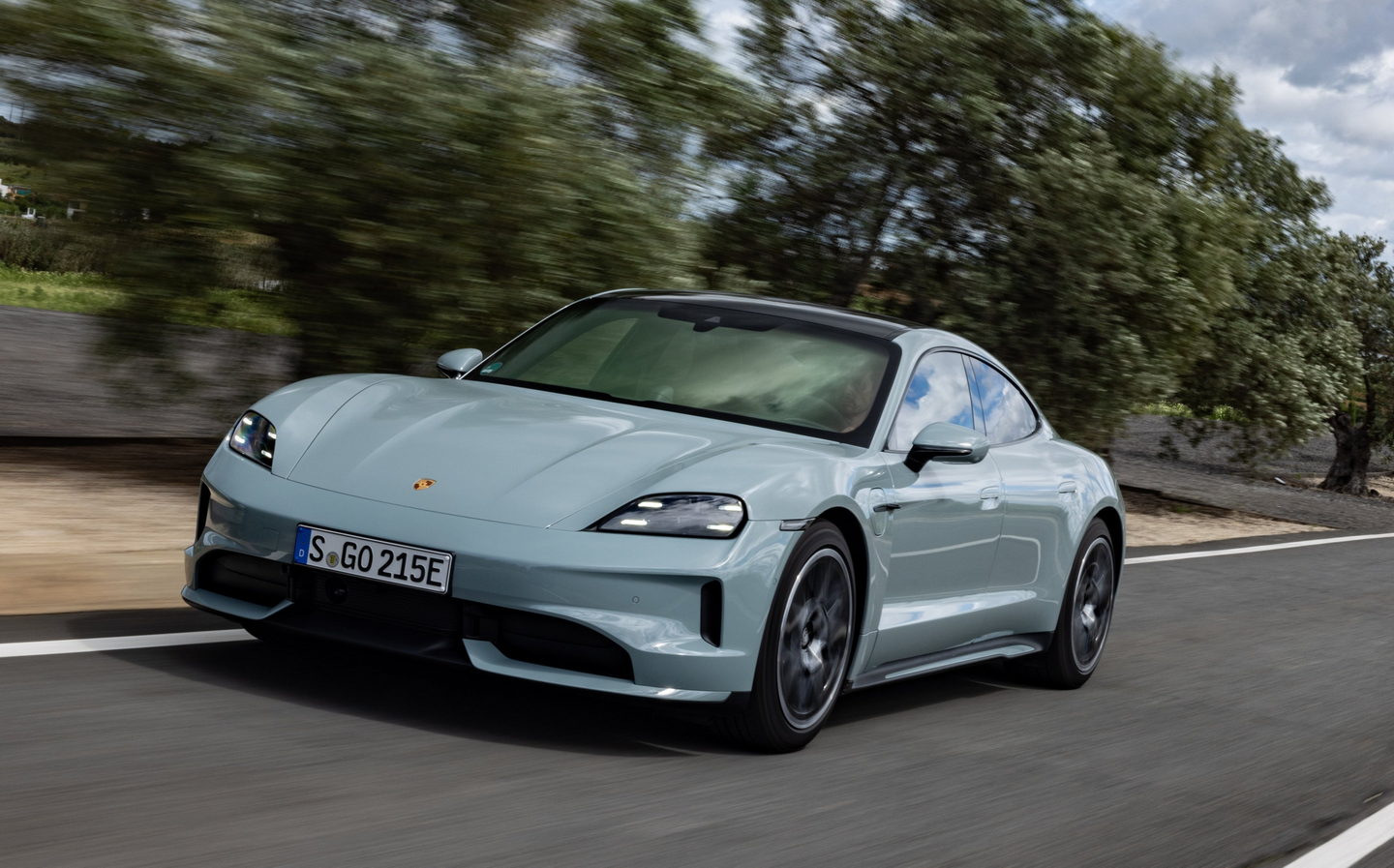Porsche Taycan 2024 review: The sublime and the ridiculous
Fast, whichever you choose... but the 1,019bhp Turbo GT is bonkers
The pure-electric Porsche Taycan has been receiving a lot of flak lately, amid widespread reports of massive depreciation. These reports raise questions over the broader stability of the used market for electric cars and are grist to the mill for those who love spreading electric vehicle (EV) hate.
As most of us are painfully aware, almost all vehicles depreciate, some faster than others, but the issues relating to Taycans in particular are a little more nuanced. The car market is generally in good health when it comes to registration figures, but generous discounts in places are helping massage those numbers, and that has a knock-on effect on used values.
It’s also true that Porsche has perhaps been a little too liberal with the supply of Taycans, leading to a saturated market. However, demand for the first electric Porsche has been huge since its launch four years ago. Now, an updated model with hefty revisions will have many watching the market to see what happens next.
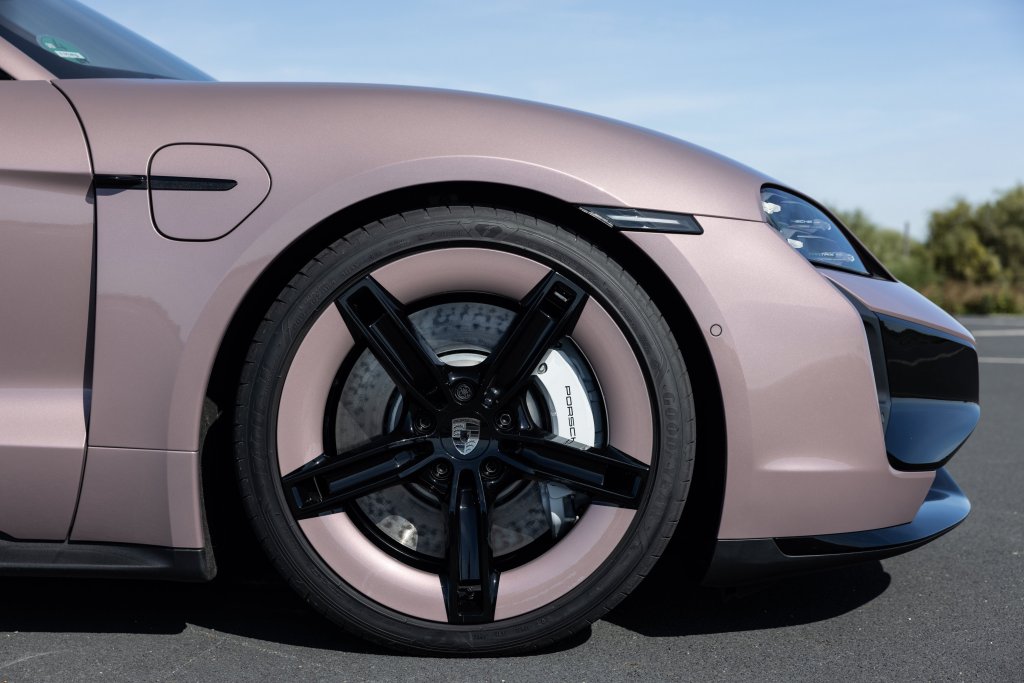
Porsche has done much more than adding a slight nip here and a tuck there to the Taycan. While the exterior styling might not have changed a great deal, there are far more significant changes beneath the skin, and these cover the whole Taycan range, a line-up that currently stands at 14 variants, including the Sport Turismo estate and slightly jacked up Cross Turismo estate. Is it any wonder Porsche is one of the most profitable car companies in the world?
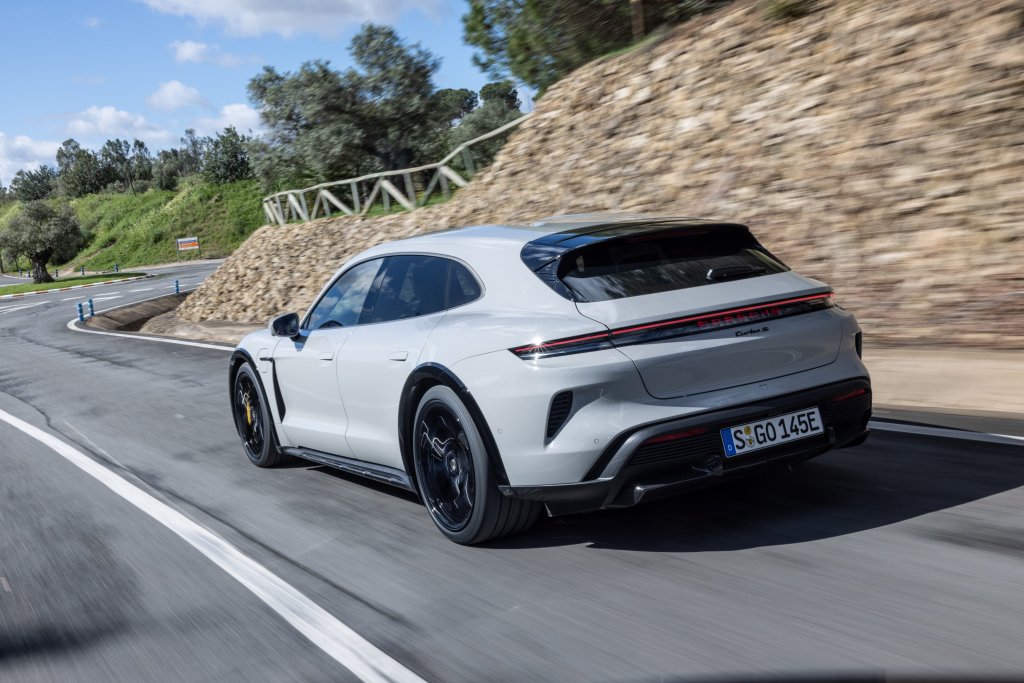
The visual updates are easier to spot on the more modestly equipped models in the range, the Taycan and Taycan 4S. New front bumpers feature vertical air intakes at either end, helping to emphasise the car’s width and stance, and include little aero flicks on the lower corners to improve its slipperiness through the air — critical stuff for any EV. Further up the range, a different bumper treatment is applied to distinguish the more powerful versions.
Around the back, there’s a new Porsche logo behind a glass panel. It is available in different colours and can be illuminated for a price. Porsche has been phenomenally successful at extracting maximum revenue from its buyers, as any time spent on its online configurator will demonstrate.
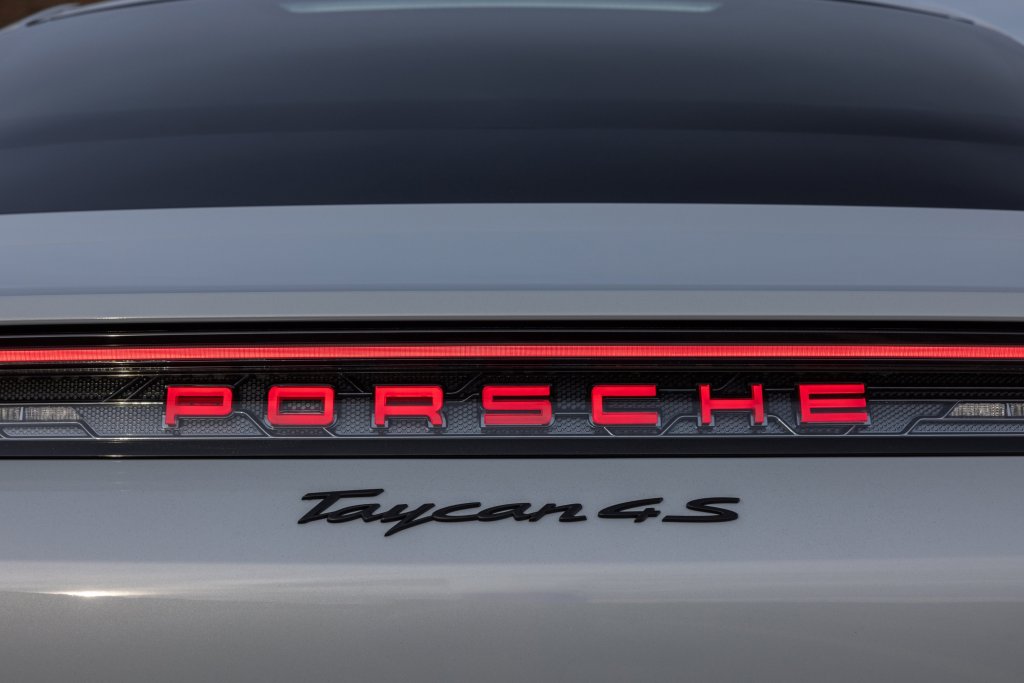
Not one aspect of the Taycan was left unexamined in the quest for efficiency gains for this updated model, as one might expect from the fastidious nature of its engineers. This includes the layout and orientation of the magnets within the electric motors, which were redesigned to improve performance.
The headline news is that the powertrain has been improved, with a slight increase in battery capacity — up from 93.4kWh to 97kWh — and a redesigned electric motor on the rear axle delivering up to 107bhp more power while weighing 10kg less than the previous unit.
Power and range continue to be two of the main metrics used to measure electric cars. Porsche doesn’t disappoint in this regard, with the Taycan now achieving a 421-mile distance between recharges, according to the official test over a mix of roads — a 35 per cent increase over the outgoing model. Expect it to be less in the UK, though, where the ambient temperature is usually less than the balmy 23C of the lab conditions.
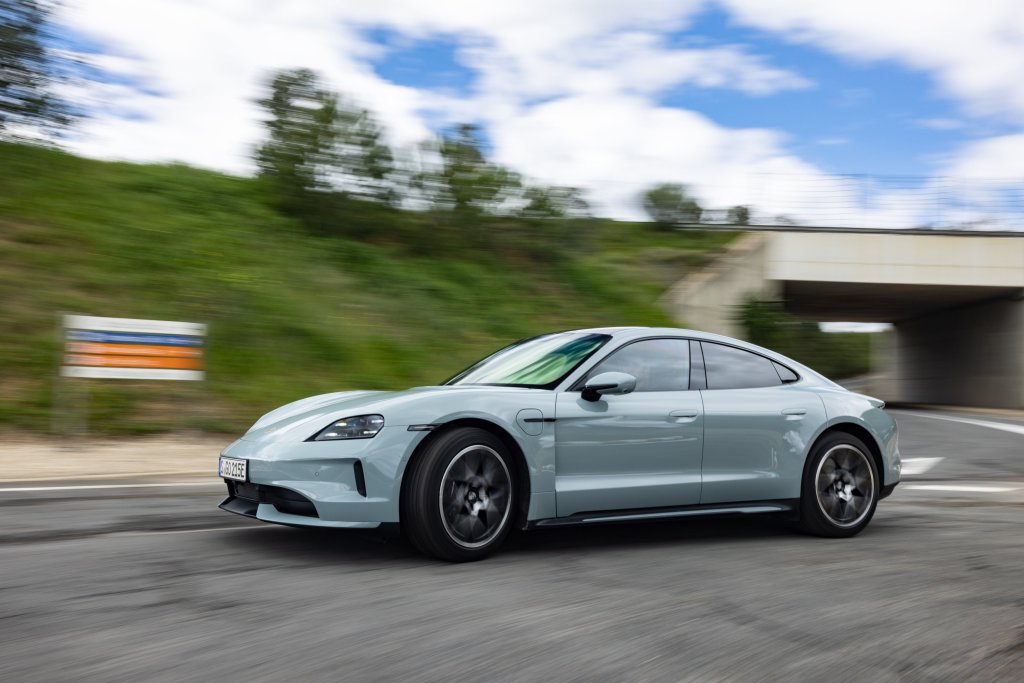
Charging times also come in for an improvement thanks to new battery management software and an increase in peak rate on a DC rapid charge to 320kW — assuming you can find a charger that can deliver such power (more are coming on stream all the time).
The sat nav-based Charging Planner helps while on a journey by preparing the battery to be at the optimum temperature when you arrive at the charger. This function means the car can pull down more than 300kW for up to five minutes before throttling back the power, shaving up to four minutes off a 10 to 80 per cent charge.
However, most will not buy a Taycan for its ability to pack electrons into its battery cells but rather for how it uses those electrons and turns them into an engaging driving experience. There is a Taycan to suit all tastes, and despite what some might have you believe, the sweet spot in the vast range is at the lower, more affordable end.
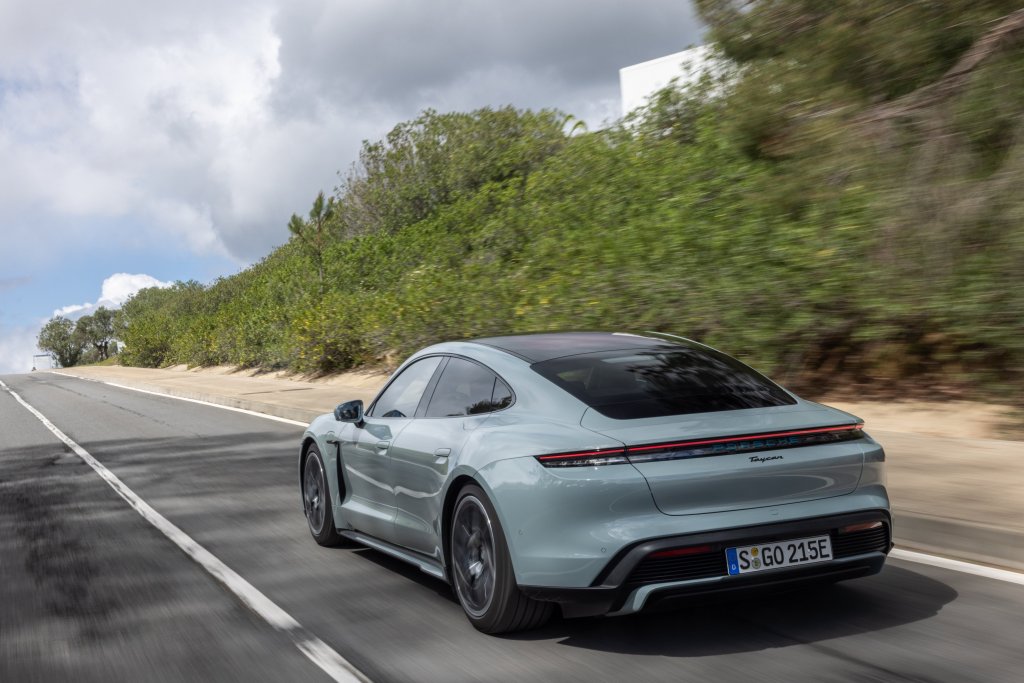
The Taycan 4S may be one of the more modest versions, costing from £95,900, but it still packs a tremendous performance punch. Its peak power output is 509bhp, enough to move you and your occupants from a standstill to 62mph in 3.7 seconds. Do you really need anything more? Balancing that performance is a range of 398 miles, officially, and let’s not forget that 18-minute charge time.
But the Taycan’s real ability is not in making you feel like you’re Top Gun‘s Maverick being slingshotted off the aircraft carrier every time the traffic lights go green, but in how it makes even the most mundane of journeys feel more special. You’ll instead take the longer way around because it has that lovely set of bends in it, and the near-perfect steering feel that Porsche executes in the Taycan is the standard to which all other car companies should aspire.
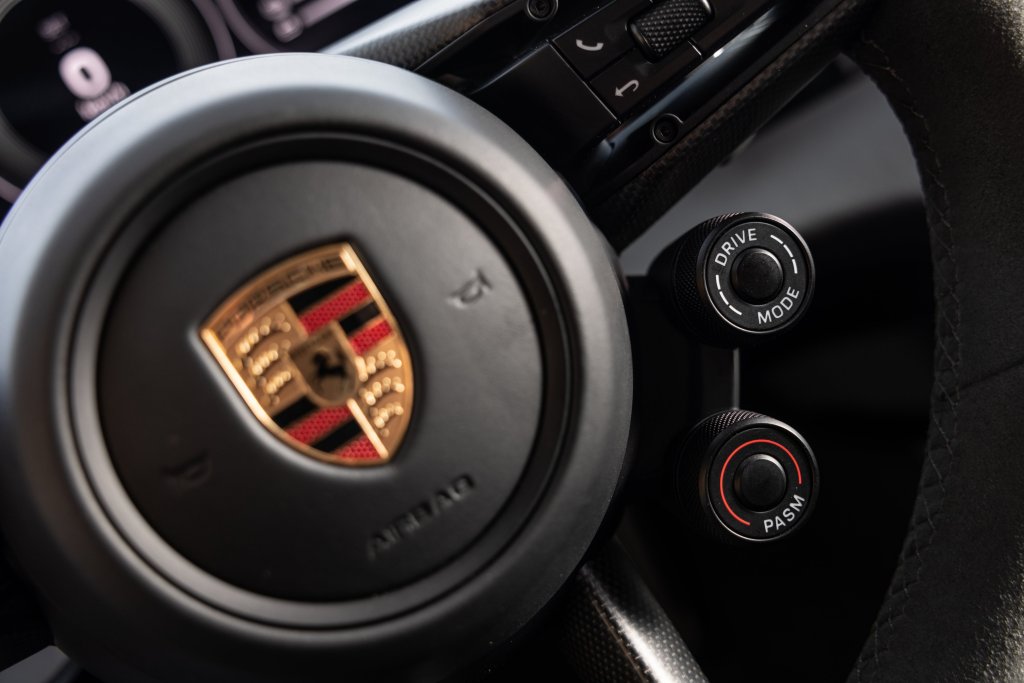
On the subject of aspiring, if the plain Taycan or 4S is too tame for you, then the Taycan Turbo S should fit the bill, mixing high-performance motoring with zero emissions. Using the Turbo name on a car devoid of any internal combustion is still odd, but at least it lives up to the name in terms of performance.
All Porsche Turbo-designated models are now differentiated by a dark grey “Turbonite” colour applied to the crest on the bonnet, wheel centres and elsewhere throughout the car. If you didn’t choose one of the numerous other options, that colour accent can be found in the stitching and air conditioning vents, too.
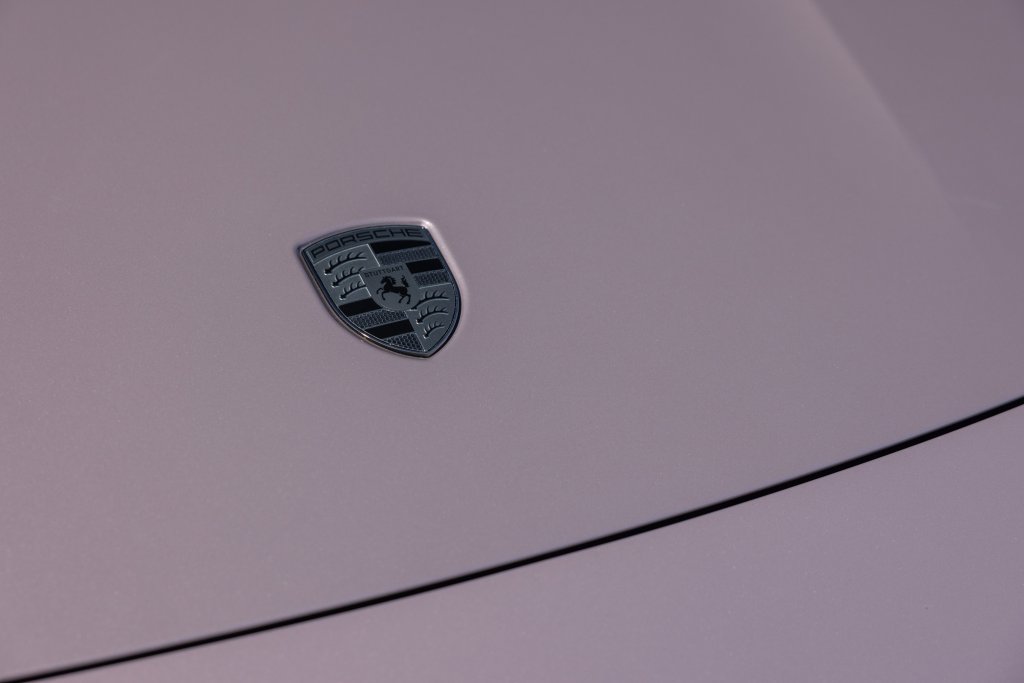
The immense power outputs that the Turbo S model now produces are just as staggering as the number of things that any buyer can specify in a Taycan. In its regular mode, beneath your right foot is 764bhp, which is dispatched across both axles through two electric motors. That number rises to 938bhp when using launch control and it’s backed up by an instantaneous 818lb ft of torque.
Managing that alone is tough work on its tyres, but there are other systems to help, including Porsche Active Ride (PAR), the company’s latest iteration of adaptive air suspension. It can raise the car by 55 millimetres when you open the door, aiding ingress or egress. Yet that is just one happy byproduct of what this system is designed to do: make the driving experience otherworldly.
In short, it uses an air chamber on each corner of the car that works alongside the damper to effectively isolate the car’s body from whatever the suspension is doing beneath it. Cars are often described as feeling as if they ride on a curtain of air; well, in the Taycan with PAR, this is wholly accurate. When the system is working to its maximum potential, it removes every sense of body roll through corners to the point that it feels unnatural.
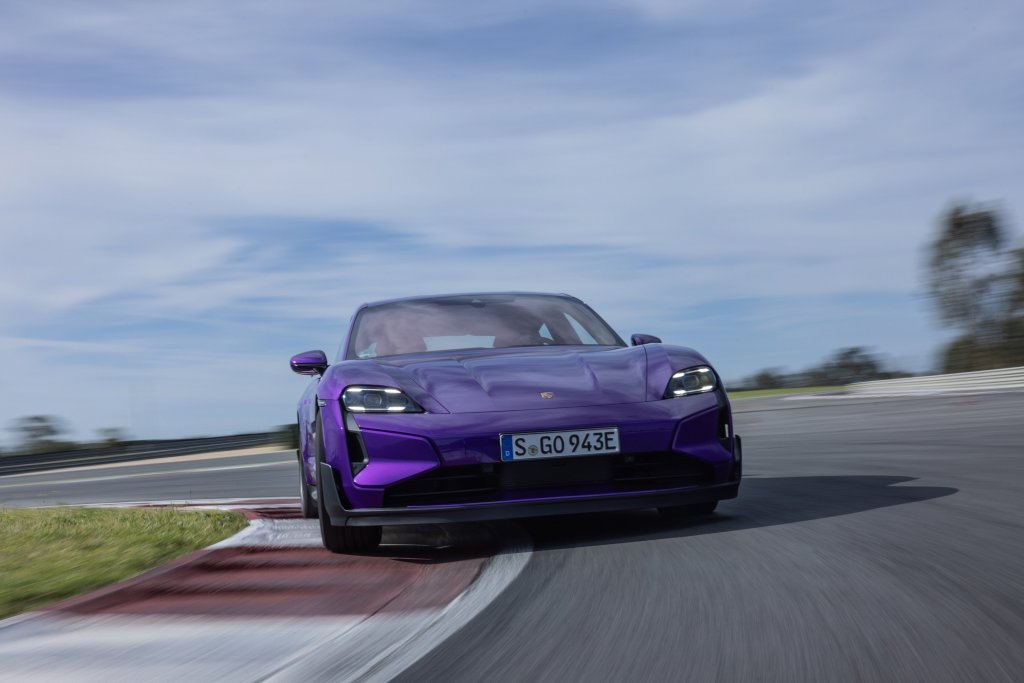
There are several stages to how PAR functions but the most dramatic comes when we take to the racetrack and experience what is called “Helicopter Mode”. In this setting, the Taycan genuinely feels like it’s toying with the laws of physics, acting counterintuitively to enhance grip and enable drivers to extract all of its performance.
Rather than the rear squatting and nose lifting as would typically happen when powering out of a corner, the inverse occurs. You feel the rear end lift and nose dip, just as a helicopter would, adding to the sensation of speed. During harder braking, it once more toys with your senses as the Taycan’s tail dips down as if there’s an invisible hand pressing down on it. It takes some time to get used to at the initial stages, as does how it can lean into an apex as a motorcycle would.
Porsche hasn’t stopped there, either, as the model update coincides with the debut of the first electric GT model. The Taycan Turbo GT is the pinnacle of the electric saloon line-up and is available with a more extreme Weissach Package that deletes the rear seats to save weight, replacing them with a visually impressive carbon-fibre stowage unit, fixed rear wing and skeletal carbon racing seats. This stripped-out saloon has recently set production car lap records at the Nürburgring Nordschleife and Laguna Seca in the United States.
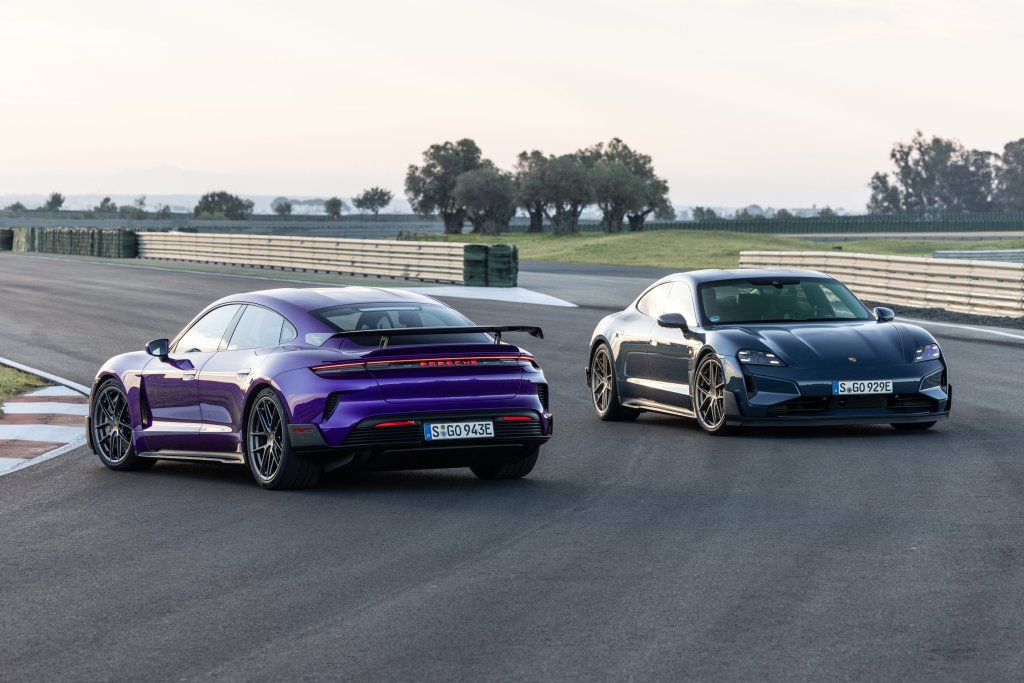
Far from practical, it sits on the far end of the EV performance spectrum for a series of production cars, which are just shy of multi-million-pound hypercars from companies such as Rimac, Lotus, and Automobili Pininfarina. The stats are incredible, including an overboost power function that produces 1,019bhp and an “Attack Mode” that gives the driver an added power bump for ten seconds at a time.
Massive 420mm carbon ceramic brake discs on the front ensure plenty of stopping power, and the Taycan Turbo GT still maintains an official range of 344 miles on a mix of roads (again, expect it to be less in the UK’s cooler climes/ on motorways). When you consider where electric cars have come from in the last decade and look at the Taycan Turbo GT, the mind boggles at what the next ten years could bring for performance EVs.
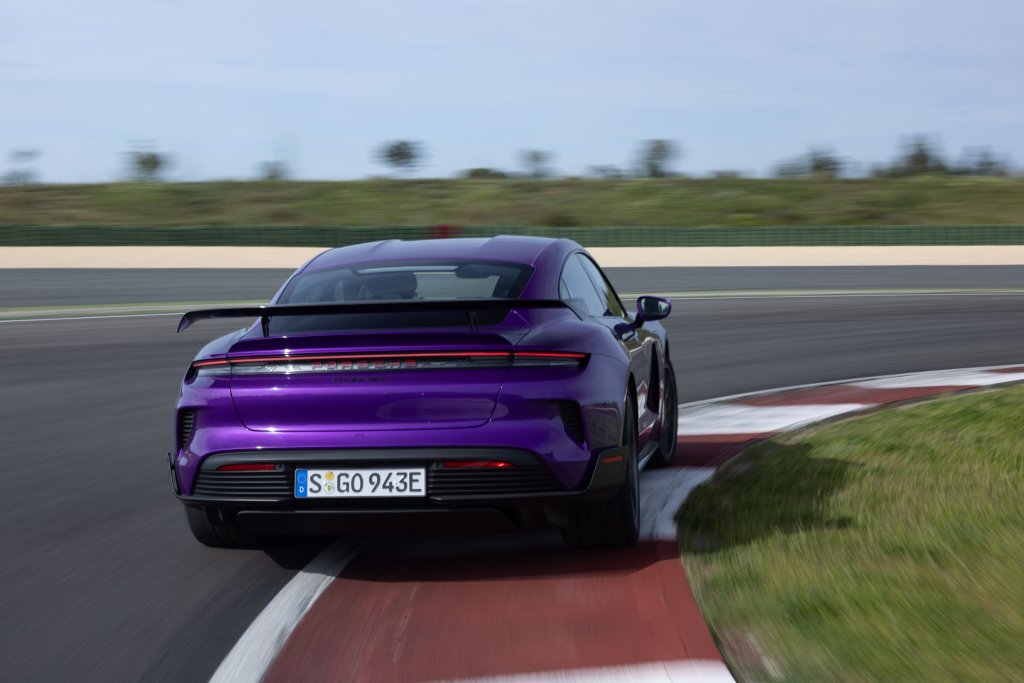
However impressive the performance figures read on paper, nothing quite prepares you for how they feel. There’s something childishly silly about the Taycan Turbo GT Weissach Package, with its deleted rear seats and stuck-on wing. Even when you’ve chosen your starting point, fully pressed the brake pedal, and planted your right foot down on the accelerator to instigate its launch control mode, what happens next is quite literally breathtaking. Lifting off the brake pedal unleashes the full 1,019bhp.
The forward thrust is as much a physical challenge as a mental one as you try to comprehend how a car can accrue speed at such a rate. The 0-62mph time, at 2.2 seconds, is mind-boggling (and stomach-churning), but it’s the second phase of acceleration, which takes only 4.2 seconds more to 124mph, that really gets you. You need only to do this a couple of times before a real feeling of nausea sets in.

Around a circuit — the only place to properly explore its performance — it devours the road relentlessly. Ballistic is the only way to describe how the Taycan Turbo GT leaves one apex and sets its sights on the next.
As you push harder in the car, its weight, reduced though it is, becomes apparent, and the nose can start to push on a bit in some corners, though it’s easily corrected. Any attempt to drive it at ten tenths is a full-on attack on the senses and leaves you astonished that such a car is available for sale to the public with no questions asked. Providing you have the requisite £186,300 of course. Even at that price, it must be one of the hypercar-level performance bargains of the year.
Some will lust after the stomach-churning performance that its top-tier models can offer, but the real-world models, such as the Taycan 4S with its notably improved driving range, will generate increased interest in the electric saloon just as much as it will for the more practical Sport Turismo and Cross Turismo.
While it remains to be seen what this improved model will do to prices of existing Taycans in the market, one thing is clear: Porsche hasn’t rested on its laurels; it’s gone out and earned a whole new set of them.
Related articles
- If you enjoyed our review of the updated Porsche Taycan, you should check out our review of the new Porsche Panamera, too
- Porsche is busy this year — the new Porsche Macan will also be pure electric, and gets a 380-mile range and 630bhp
- Thinking of getting behind the wheel of a new vehicle this year, as a private or company car driver? Check out 11 of the most exciting new models arriving in 2024
Latest articles
- Should I buy a diesel car in 2025?
- F1 2025 calendar and race reports: The new Formula One season as it happens
- Zeekr 7X AWD 2025 review: A fast, spacious and high tech premium SUV — but someone call the chassis chief
- Denza Z9GT 2025 review: Flawed but sleek 1,062bhp shooting brake from BYD’s luxury arm
- Extended test: 2024 Renault Scenic E-Tech review
- Best-selling cars 2025: The UK’s ten most popular models of the year so far
- Audi A6 Avant 2025 review: Trusty executive estate ticks expected boxes, and there’s still a diesel option
- Keir Starmer eases pressure on carmakers to sell EVs in response to ‘global economic headwinds’
- Ferrari 12Cilindri Spider review: Heady blend of traditional and futuristic becomes even more intoxicating after lid is removed


